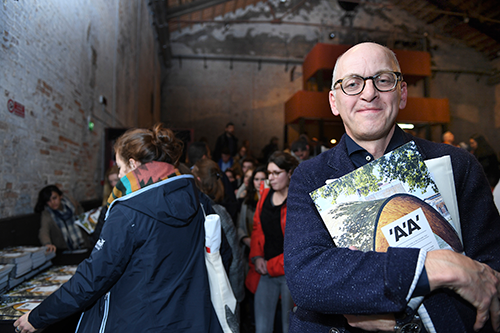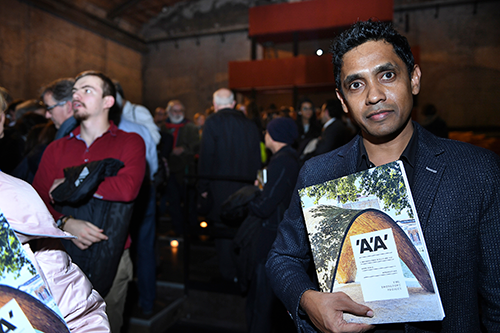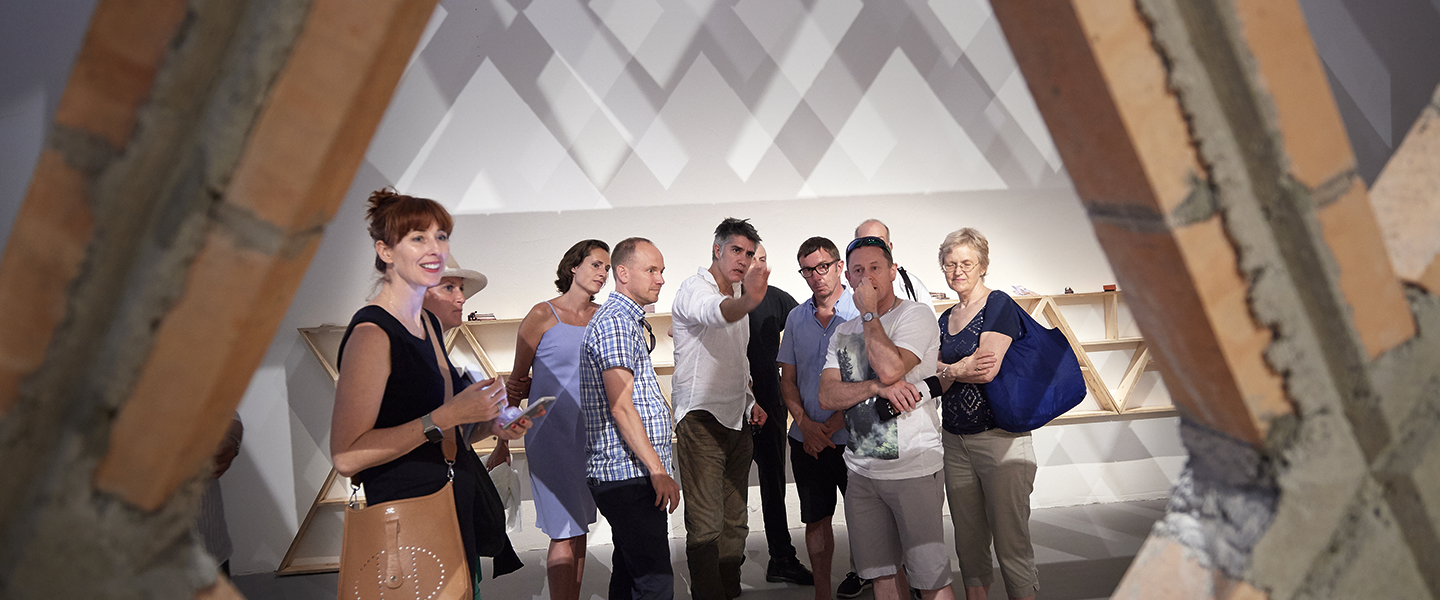© LafargeHolcim Foundation
The Droneport project: new AA special issue!
“This skilled geometrical vault holds the promise of a brighter future”, writes Emmanuelle Borne, AA’s editor-in-chief in the latest “hors série” AA Perspectives publication of the magazine. This special issue is dedicated to the Droneport project, the “successful attempt to harness the rapid improvements in technology for the benefit of the poorest”, as Edwin Heathcote, architecture critic of the Financial Times, puts it in his editorial. A prototype of the Droneport shell was exhibited on the Arsenal’s docks, specially built for La Biennale di Venezia 2016. Its presence highlighted the intention of Alejandro Aravena, curator of the 15th International Architecture exhibition, to understand how designers can marshal their skills to affect the wider world, bringing together architecture and activism.

The self-supporting structure of the Droneport clearly carries the mark of Lord Norman Foster – and so does the AA’s special issue, showing sketches, drawings and renderings by the British architect who is known for having built the largest airport of the world in Beijing. “Norman, now come and build the smallest airport”. Jonathan Ledgard, Director of the Future Africa Initiative and initiator of the project, recalls his initial attempt to get Foster enthusiastic about the idea of creating a system of infrastructure enabling the use of drones to supply aid and other goods to remote communities in emerging countries, and particularly in Africa.
How the Droneport concept was then developed, with a prototype vault later being built in Venice, is documented in AA’s special issue: an international and interdisciplinary collaboration “to do more with less”, as Norman Foster explains in an interview with Edwin Heathcote. The “Innovations and materials” chapter exposes the work of consulting firms, engineers and material scientists (Block Research Group at ETH Zurich, ODB, LafargeHolcim research centre), as well as what Carlos Martin Jimenez, the project’s master mason describes as “applying ancestral geometry for a visionary structure”. A final section is dedicated to the social impact and transferability of the Droneport, including a comprehensive construction manual: “From a brick to a network”.

“What works for a sophisticated structure like the Droneport is also ideal for affordable housing solutions” explains Eric Olsen, CEO of LafargeHolcim. Engineers at the research centre of the world’s leading building materials supplier customized Durabric – a product made of locally available compressed earth – to meet the Droneport’s specific requirements. The LafargeHolcim Foundation for Sustainable Construction sponsored the realization of the Droneport prototype. The Foundation’s ambitions and its amazing network of architects are showcased through 9 case studies presenting the sustainable approach of designers such as Alejandro Aravena, Atelier Bow-Wow, MOS, NLÉ, Francis Kéré, Christian Kerez, Rahul Mehrotra, Milinda Pathiraja and Wang Shu, all exhibited at the 2016 Architecture Biennale in Venice. These renowned and committed architects from all continents are all ambassadors of the LafargeHolcim Awards – the world’s most significant competition in sustainable design. AA special issue “The Droneport project” is a source of inspiration for design and building professionals on multifaceted approaches to sustainable construction.


